Toutes nos vidéos
Visionnez toutes nos vidéos filtrées par thèmes.
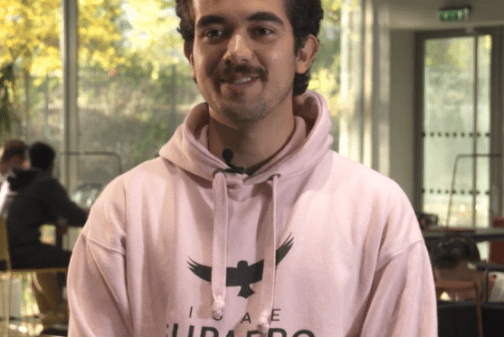
Mateus de Magalhães Barcelos Costa -
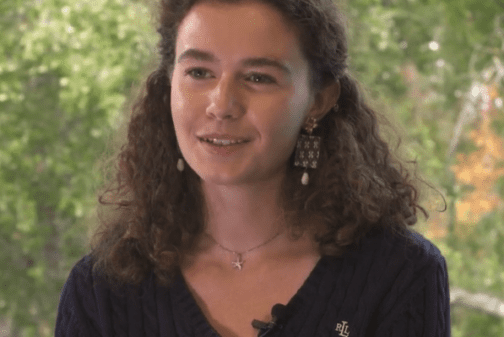
Marina Mileni Munari Arrieta -
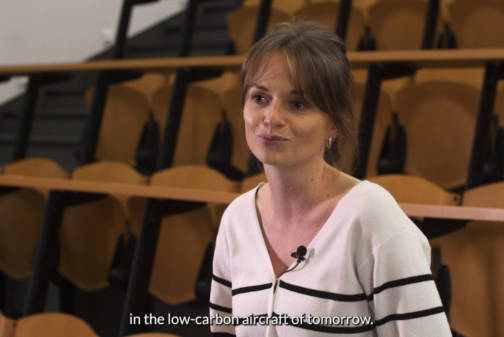
Entreprise
Témoignage de Pauline Heuze, assistante de recrutement à Liebherr Aerospace and TransportationLiebherr développe, fabrique et assure la maintenance de systèmes d’air innovants pour l’industrie aéronautique. L’aviation durable, devenue un enjeu majeur pour l’industrie aéronautique, implique une collaboration étroite entre les entreprises et l’ISAE-SUPAERO notamment à travers ses formations. L’entreprise a pu, lors du Village Entreprises, échanger avec nos étudiants et leur présenter différents programmes des stages, de projets collaboratifs, et opportunités professionnelles. Pour développer sa politique d’innovation, Liebherr a besoin de jeunes ingénieurs prêts à relever les défis de l’aviation durable, mais aussi compétents dans les domaines des technologies durables, des systèmes de propulsion alternatifs et de la gestion des ressources.
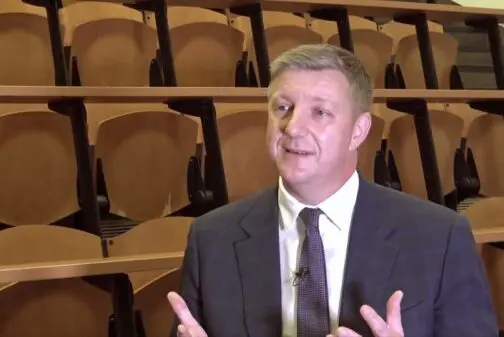
Entreprise
Rencontre avec Christophe Henno (S 1991) directeur des programmes d’ Airbus AtlanticRencontre avec Christophe Henno (S 1991) directeur des programmes d’ Airbus Atlantic
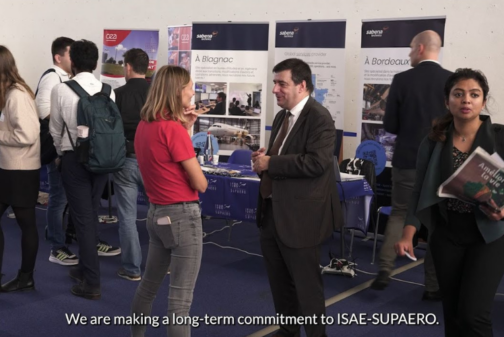
Entreprise
Témoignage d’Eric Vicente, directeur des ressources humaines chez Sabina TechnicsEric Vicente nous parle de Sabena Technics, entreprise spécialisée dans la maintenance, la réparation et la révision d’avions (MRO – Maintenance, Repair, and Overhaul), qui était présente au Village Entreprises pour rencontrer les étudiants de l’ISAE-SUPAERO, experts en aéronautique et formés à l’innovation de ce domaine ! Leur objectif est de leur proposer des opportunités professionnelles et des stages. Ces rencontres leur permettent aussi de renforcer leur présence auprès des futurs ingénieurs et de proposer, pour le futur, des partenariats pour les projets de recherche et développement (R&D) de l’Institut.
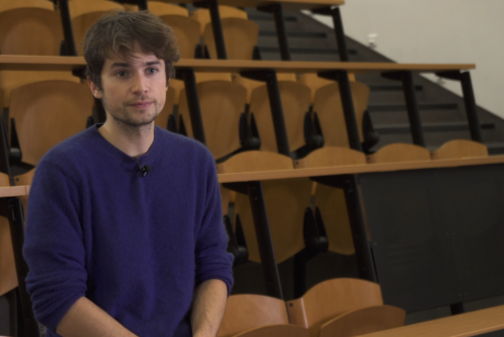
Entreprise
Témoignage de Joseph Risson, alumni ingénieur 2024 & co-fondateur de Viraj H2D’étudiant à entrepreneur : c’est la voie que Joseph Risson, diplômé en 2024, a emprunté à l’ISAE-SUPAERO ! Co-fondateur de la startup Viraj H2, créée au cours de sa 3ᵉ année de cursus ingénieur, Joseph Risson souhaite apporter son expertise à la décarbonation de l’aérien en explorant une nouvelle architecture de propulsion à hydrogène ! Joseph et son associé, Paul de Goÿs, ont reçu en 2023 le prix d’1 M€ de la fondation Lopez-Loreta pour poursuivre leurs recherches sur ce mode de propulsion innovant et bénéficient aujourd’hui de l’accompagnement et de l’expertise de l’InnovSpace, incubateur officiel de l’école, où la startup est actuellement hébergée. Comme tous nos alumni, il joue un rôle essentiel dans la création de liens durables entre l’institution et ses anciens étudiants. Il favorise l’entraide et le partage d’opportunités professionnelles, contribue à renforcer la communauté et à soutenir les générations futures grâce à son expérience et ses ressources.
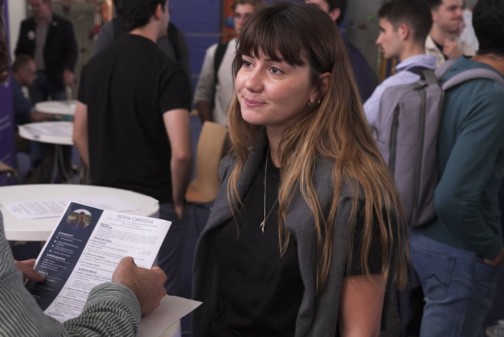
Entreprise
Témoignages d’Alex Dejoie & Sofia Cardola, étudiants ingénieur et du master in aerospace engineeringL’ISAE-SUPAERO a récemment accueilli, sur son campus, une quarantaine d’entreprises issues de différents secteurs d’activités de l’industrie et des services. Ces entreprises, représentées par des alumni et des responsables RH, ont pu partager avec plus de 500 étudiants présents des opportunités de stage et d’emploi. L’événement a également permis des échanges privilégiés entre les étudiants et les professionnels sur les enjeux, les projets actuels et futurs. Ces rencontres de proximité ont été particulièrement enrichissantes, apportant des conseils avisés aux jeunes talents et une compréhension mutuelle des besoins et attentes ! Le village entreprise est une formidable occasion de tisser des liens et développer son réseau professionnel tout en élargissant le champ des possibles. À travers cette initiative, l’ISAE-SUPAERO, au cœur de la formation de nos étudiants, a réaffirmé son rôle central dans leur accompagnement vers le monde professionnel. Découvrez les témoignages d’Alex Dejoie, étudiant ingénieur spécialité astrophysique et espace, et de Sofia Cardola, étudiante du Master in Aerospace Engineering.
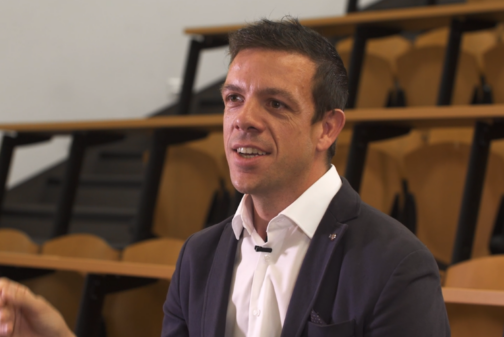
Entreprise
Témoignage de Florian Bonte, alumni ISAE-SUPAERO 2010 : créer des opportunités grâce au réseauCréer des opportunités par le réseautage : un témoignage de Florian Bonte, diplômé S2010 ISAE-SUPAERO ! Il nous parle de notre partenariat, de l’importance du travail en réseau et de la transmission d’informations en tant qu’ancien élève de l’école, et responsable des ventes chez Groupe SII, entreprise partenaire de l’école. Nos entreprises partenaires ont récemment participé au Village Entreprises, événement qui s’est tenu sur le campus de l’ISAE-SUPAERO. Ce rendez-vous annuel incontournable permet à nos étudiants de rencontrer, d’échanger et de nouer des contacts avec nos entreprises partenaires ! Grâce aux nombreuses options de formation offertes par l’Institut, et à la diversité de leurs premières expériences professionnelles et de leurs nationalités, les profils professionnels de nos étudiants sont parfaitement adaptés aux besoins des entreprises. Pour nos étudiants, il s’agit d’une opportunité unique d’échanger avec des professionnels pour repérer des opportunités de stages & d’emploi, d’affiner leur projet, ou de trouver des idées pour faire mûrir leurs projets.
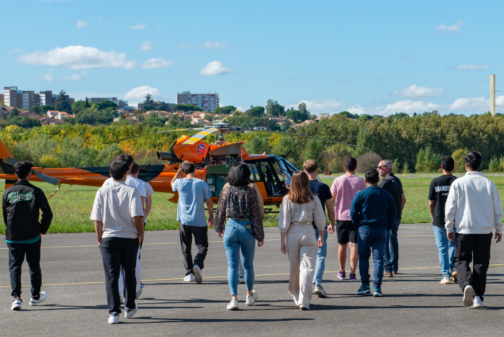
Formation
Le Mastère Spécialisé® HADA – Helicopter, Aircraft, and Drone Architecture de l’ISAE-SUPAEROLe programme HADA est accrédité par la Conférence des Grandes Écoles et enseigne les techniques de pointe nécessaires aux futurs systèmes d’aéronefs et de giravions, y compris les nouveaux défis liés à la mobilité urbaine. 2 modes d’apprentissage au cours de l’année : - une session académique de septembre à mars, dispensée par les professeurs permanents de l’ISAE-SUPAERO et des experts de l’industrie aéronautique avec leurs connaissances et expériences actualisées (Airbus Helicopters, Airbus Group, Safran/Turbomeca, Thales, etc.) ⇾ comprenant : des cours magistraux, des travaux dirigés et des séances de travaux pratiques. & une thèse professionnelle ou un stage de 4 à 6 mois : - dans une entreprise aérospatiale ou dans un laboratoire - en France ou à l’étranger ⇾ encadré par un tuteur de l’organisme d’accueil et de l’ISAE-SUPAERO. La thèse se conclut par la remise d’un rapport et d’un mémoire oral devant un comité de thèse. Ce programme prépare les participants à un large éventail d’opportunités professionnelles allant de la conception, la certification et l’exploitation d’aéronefs civils et militaires, de drones et d’hélicoptères en France et à l’étranger. Devenez le prochain expert dans les industries des avions, des hélicoptères et des drones ! 🚁 Pédagogie, offres d’emploi, candidatures, financement… retrouvez plus d’informations ici : https://swll.to/AbAYA

Institut
Journée Portes Ouvertes 2024 de l’ISAE-SUPAEROSamedi 12 octobre, nous vous avons ouvert les portes du campus pour vous faire découvrir nos formations, nos activités de recherche, nos équipements, nos clubs étudiants… Au total, c’était près de : > 2124 visiteurs, > 235 bénévoles, > 7 conférences, > 70 animations, présentations et ateliers, > une multitude de photos très chouette avec notre belle mascotte Un grand merci aux équipes ISAE-SUPAERO mobilisées et à tous les visiteurs pour cette fantastique journée !
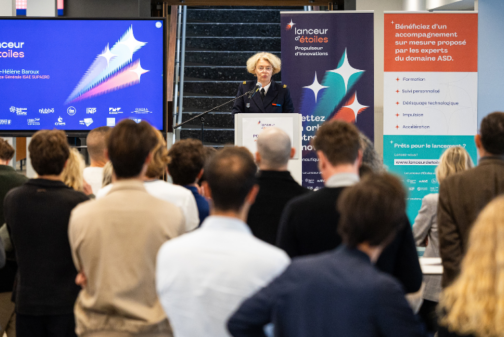
Innovation
Le dispositif d’accompagnement des startups « Lanceurs d’étoiles »Découvrez le dispositif d’accompagnement des startups : « Lanceur d’étoiles » ! Né de l’association de treize partenaires nationaux et régionaux, experts en ASD et en création de startup Deeptech (établissements universitaires, organismes nationaux, SATT, incubateurs et accélérateurs régionaux) et réunis en consortium, « Lanceur d’étoiles » a pour mission d’orienter et d’aider les porteurs de projets à propulser leurs technologies innovantes à travers des startups créatrices de valeur. Ce programme est animé et coordonné par Toulouse Tech Transfer pour le compte de ses partenaires, sous l’impulsion de l’Université de Toulouse. Il est soutenu par le PUI UT Innovation, dont une des actions clés consiste à stimuler la création de startups deeptech grâce à un accompagnement sur-mesure des porteurs de projets. En savoir plus sur le dispositif d’accompagnement lanceur d’étoiles et sur les startups hébergées : https://www.isae-supaero.fr/IMG/pdf/lanceur-dossier_de_presse-0310.pdf Crédit vidéo : Toulouse Tech Transfer.
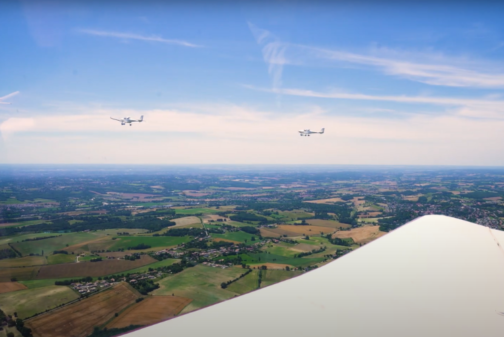
Formation, Recherche
Des cours au cockpit : les activités de pilotage à l’ISAE-SUPAERODécouvrez en vidéo le centre des opérations aériennes de Lasbordes (COAL) de l’école. Avec une flotte de 9 avions légers, le COAL permet de conduire 3 types d’activités : - Des cours de pilotage pour passer le brevet de pilote privé (PPL) qui permettra aux élèves de piloter un avion monomoteur. - Des travaux pratiques en lien direct avec les enseignements pédagogiques de l’école, de la mécanique du vol à l’initiation aux techniques des essais en vol pour la formation continue. - Des travaux de recherche portant principalement sur les facteurs humains, sur les mécanismes cognitifs du pilote en temps réel pendant le vol. À l’ISAE-SUPAERO, les étudiants en cursus ingénieur ou en Master ont la chance de pouvoir passer leur brevet de pilote à seulement quelques kilomètres du campus. Plusieurs instructeurs les accompagnent et les forment au pilotage. Tous font partie du Département de Recherche Conception et Conduite des véhicules Aéronautiques et Spaciaux dirigée par Valérie Budinger.

